Volkssturm — Last Gasp of the Third Reich
January 14th, 2025
11 minute read
On September 11, 1944, a recon patrol of the U.S. 5th Armored Division waded across the Our River from Luxembourg into Germany. What they discovered was somewhat shocking — parts of the vaunted Siegfried Line had been abandoned, and for the moment it seemed like the Third Reich was open to attack. The bloody Battle of Aachen — one of the toughest urban battles of World War II — would begin the next day.
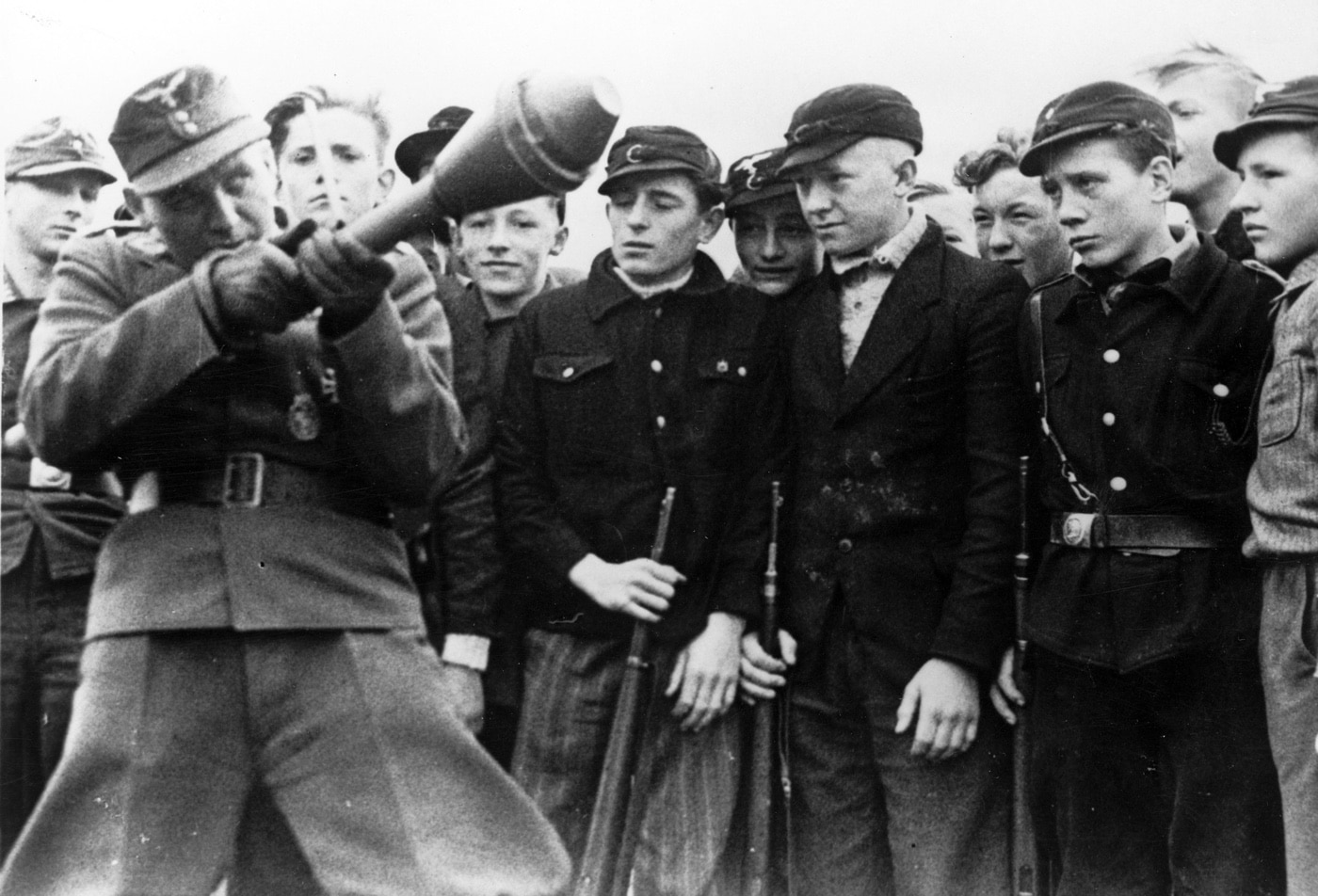
Despite their propaganda boasts and broadcasts, the deteriorating military situation was not lost on the Nazi leaders. Even though the National Party hierarchy had enough clarity to know that were not enough men in the Wehrmacht and Waffen-SS combined to hold off the Western Allies advancing through France, nor the Red Army rampaging through Poland, they still were deluded enough to believe that a national militia made up of old men and young boys could save the Reich.
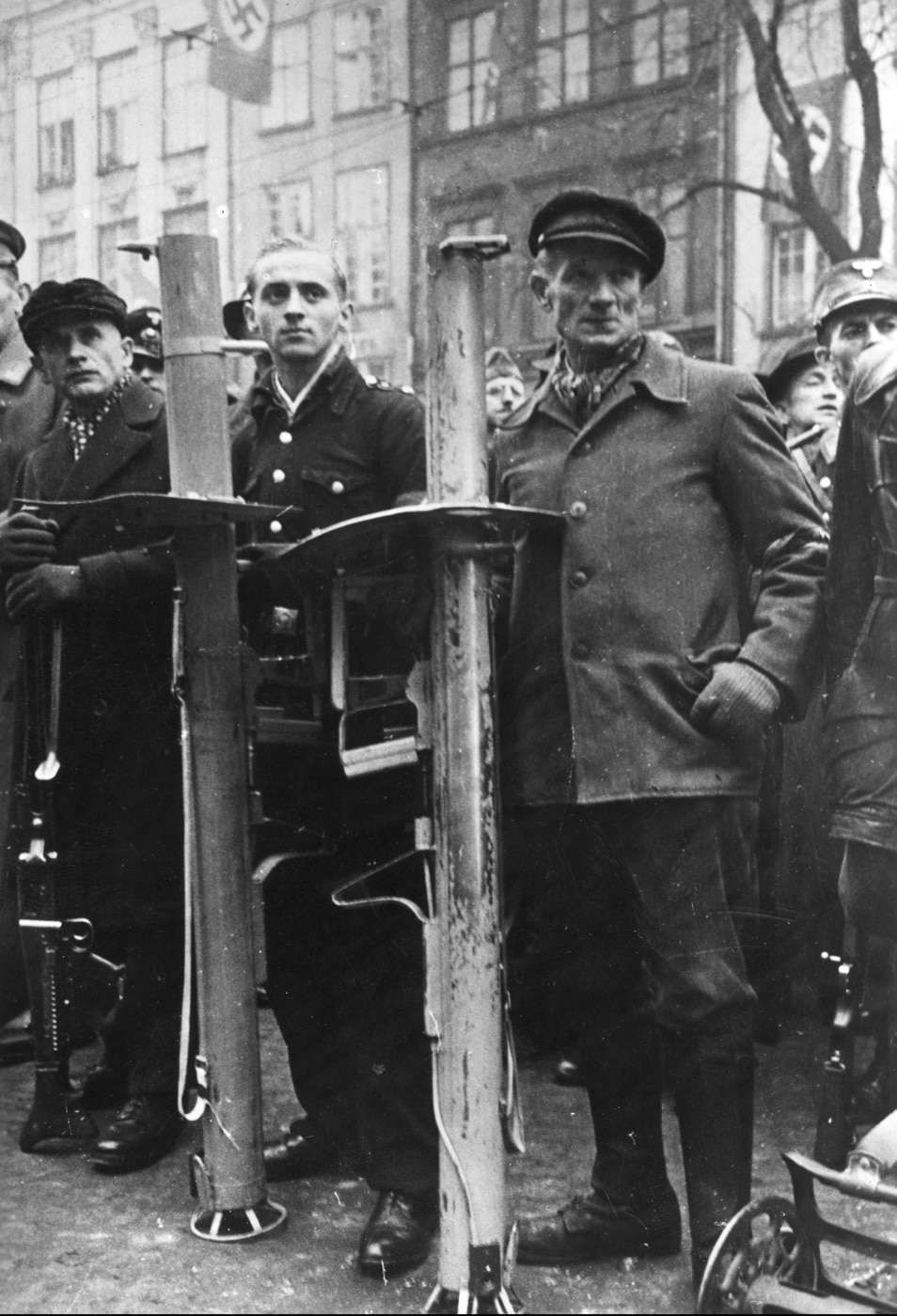
And so it was that on September 25, 1944, Adolf Hitler ordered the establishment of the Volkssturm. The German “People’s Storm”, made up of conscripts between 16 and 60 years of age, would, as Joseph Goebbels stated, “overcome their enemies’ greater military strength through the force of will”.
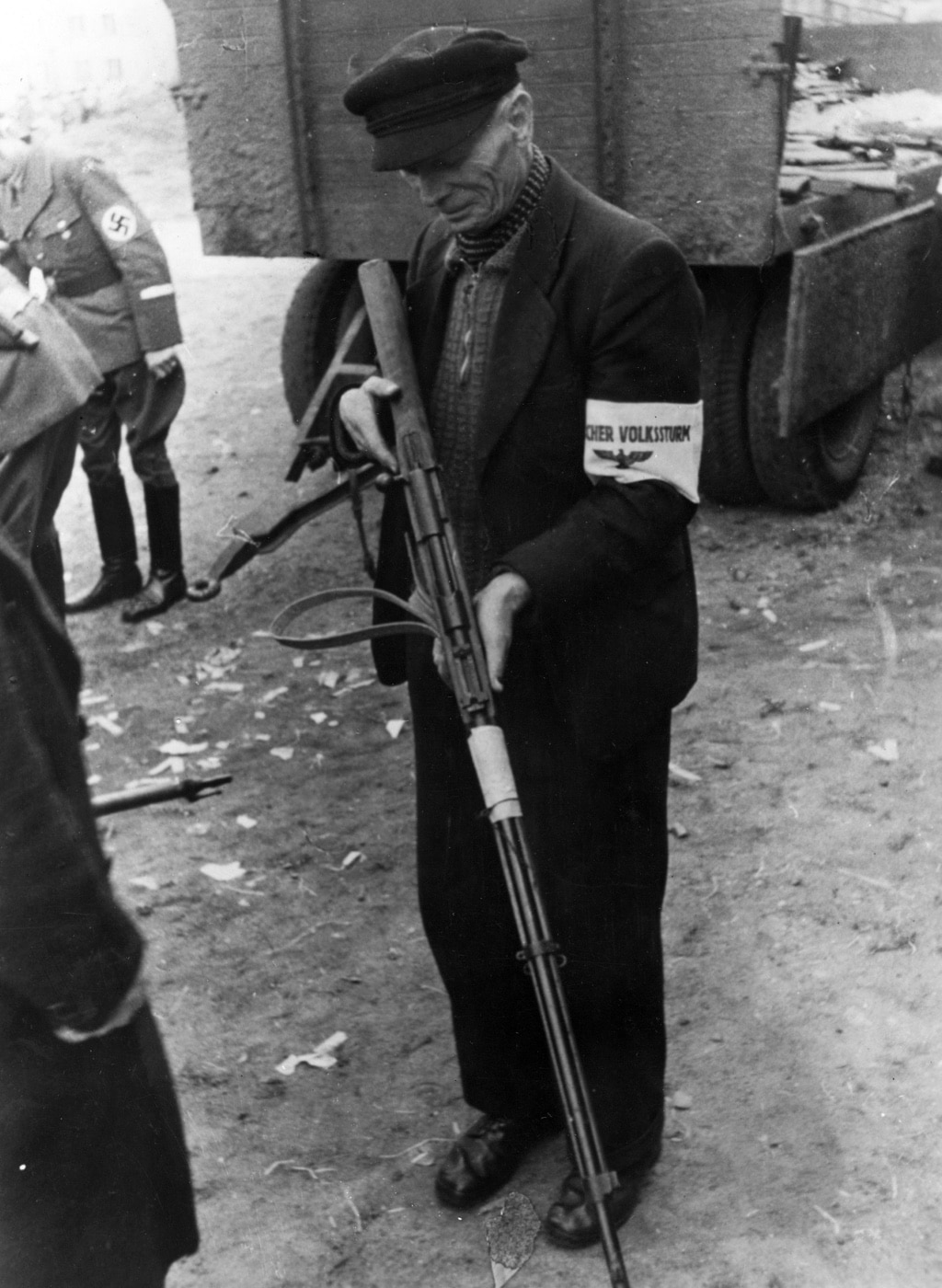
The Volkssturm militia was formally announced to the German people on October 16, 1944, and recruitment began two days later. What followed was one of the most bizarre military formations in the history of World War II.
What Was the Volkssturm?
Allied forces heard a great deal of propaganda about the Volkssturm, but there was very little useful intelligence about the organization and its military capabilities until 1945. This definition of the Volkssturm appeared in the U.S. War Department’s “Handbook on German Military Forces”, dated March 15, 1945:
Founded by Hitler in October 1944, this national militia organization represents an ultimate effort to mobilize all available manpower for employment in total war. It includes all German men between the ages of sixteen and sixty who are not in the Armed Forces and who are able to bear arms.
The members of the Volkssturm are described as soldiers for the duration of their employment, which is to take place locally wherever a given area is threatened. The Volkssturm has the mission of reinforcing the active strength of the Armed Forces and defending German soil to the last. It is recruited under the auspices of the Party, whose formations join in providing its cadres and officers. The leadership in the Party regions is assigned to the Gauleiter, the rifle training to the SA (Sturmabteilung), and the automotive training to the NSKK (National Socialist Motor Corps). Beyond that all installations and institutions of the Party serve to form and train the new units.
Himmler, as Commander of the Replacement Army, is responsible for the organization of the Volkssturm and for ordering its mobilization and employment in any particular area.
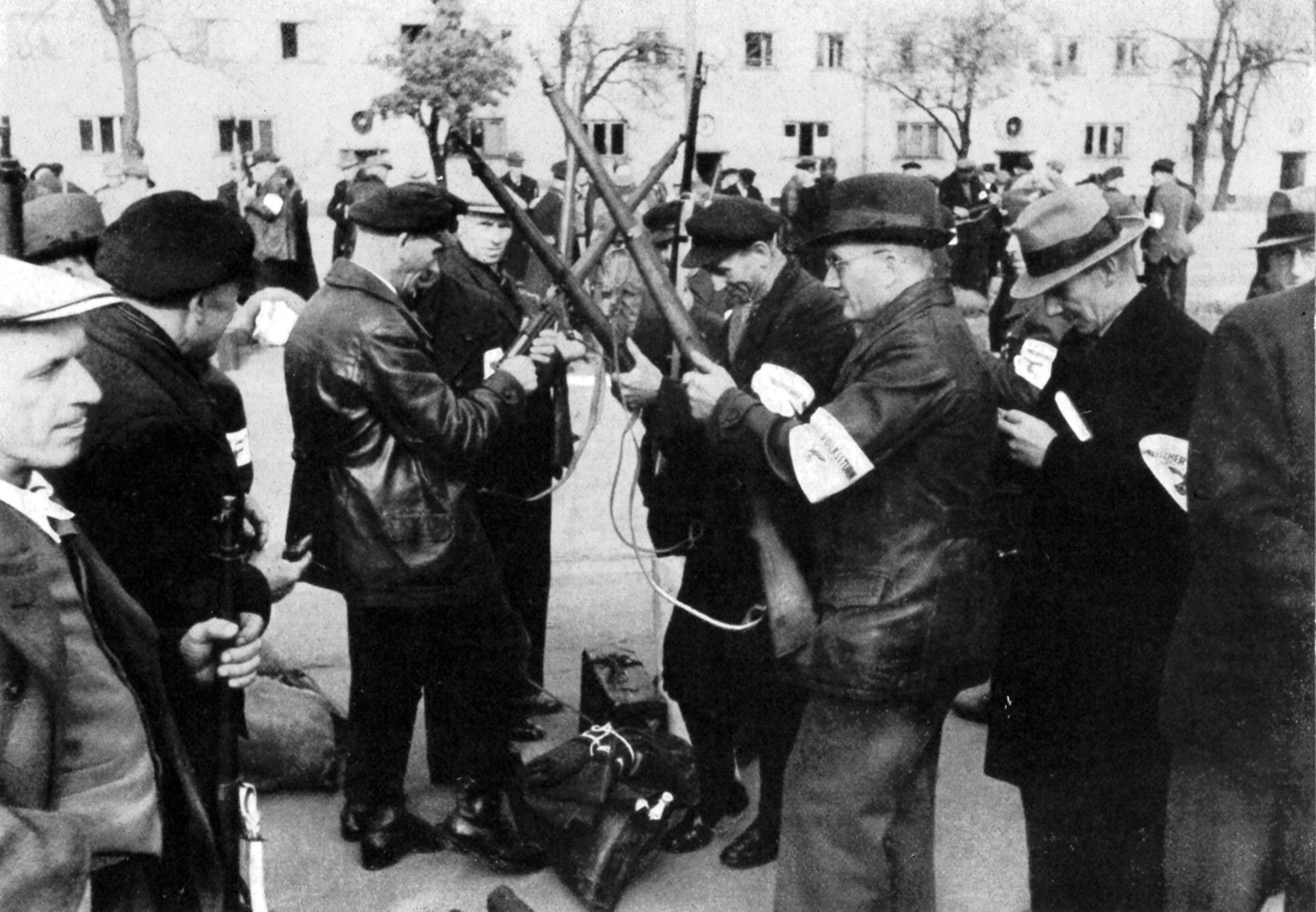
The U.S. Intelligence Bulletin of February 1945 provides more detail on the structure of the Volkssturm and offers a glimpse into the completely bewildering array of captured small arms used to equip the units. The German militia contained very little “storm”, unless you count their impossible logistical challenges.
Nazi leaders assert that all Volkssturm members will be given the same instruction…The rifle is the basic weapon. It is to be supplemented by submachine guns and light machine guns.
…it would be difficult to state exactly which small arms models the Volkssturm will use. German, Czech, and Polish Mauser rifles already are in service, and use will be made of the many thousands of captured Russian rifles and machine guns. Other equipment includes egg hand grenades and potato-masher hand grenades.
For antitank defense, the Panzerfaust hollow-charge launchers have been promised to the Volkssturm…German bazookas (Panzerschreck) also may be furnished.
At present any turnout of the Volkssturm is likely to present a rag-tag-and-bobtail appearance… The only item of clothing or insignia currently issued is a black arm band with the lettering “Deutscher Volkssturm” in a light color and with the word “Wehrmacht” directly underneath this.
Uniforms of the Storm Troopers, Hitler Youth, and Party territorial leaders will be encountered. Many men will simply wear civilian clothes.
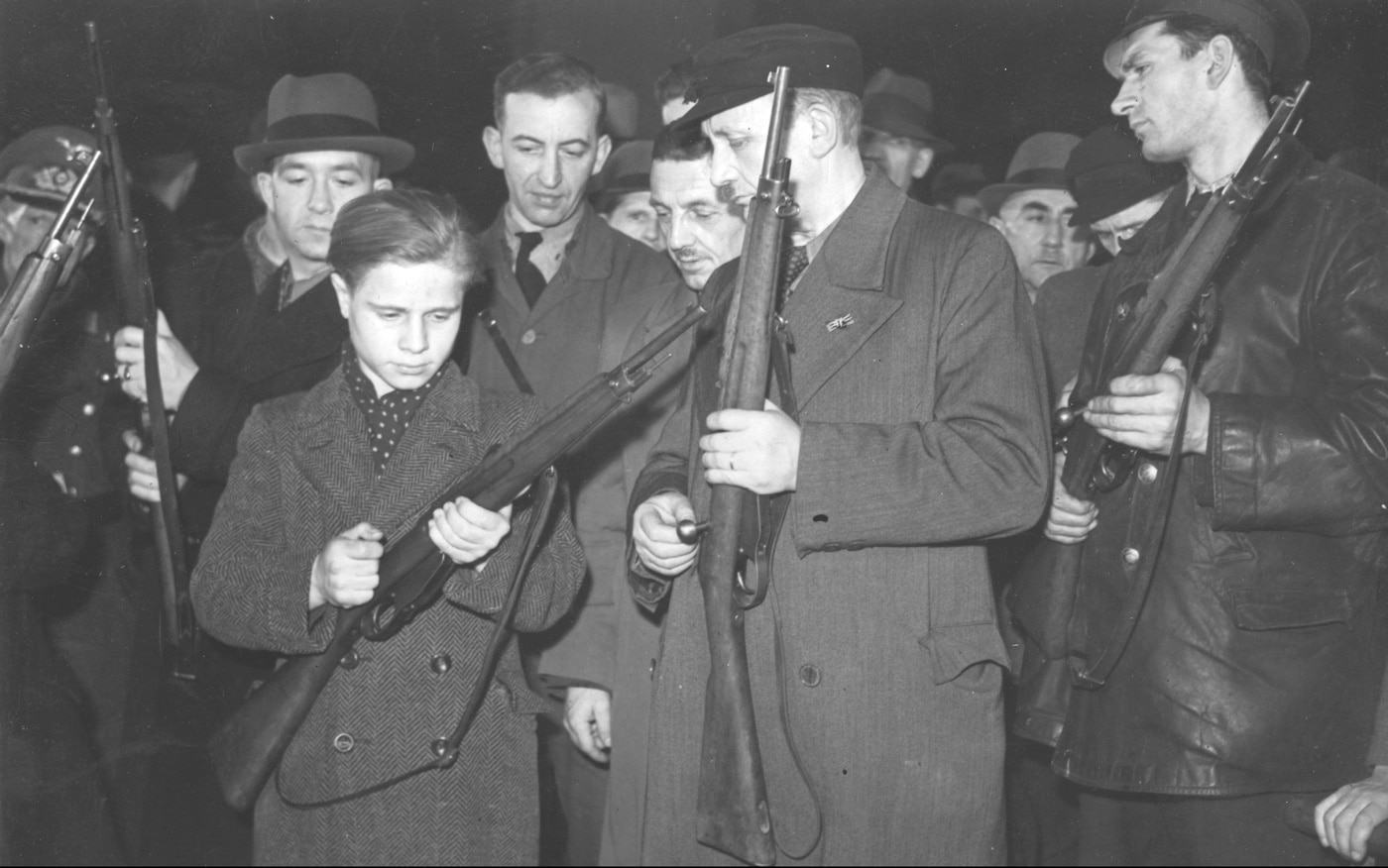
Volkssturm Units in the East vs. the West
As Germany fought a two-front war, the attitude and dependability of various Volkssturm units varied greatly, and particularly from west to east. Facing the British and Americans, the Volkssturm troops rarely fought to the last. In the final months of the conflict, more and more Germans sought to escape the murderous Red Army in the east and surrender to the Western Allies.
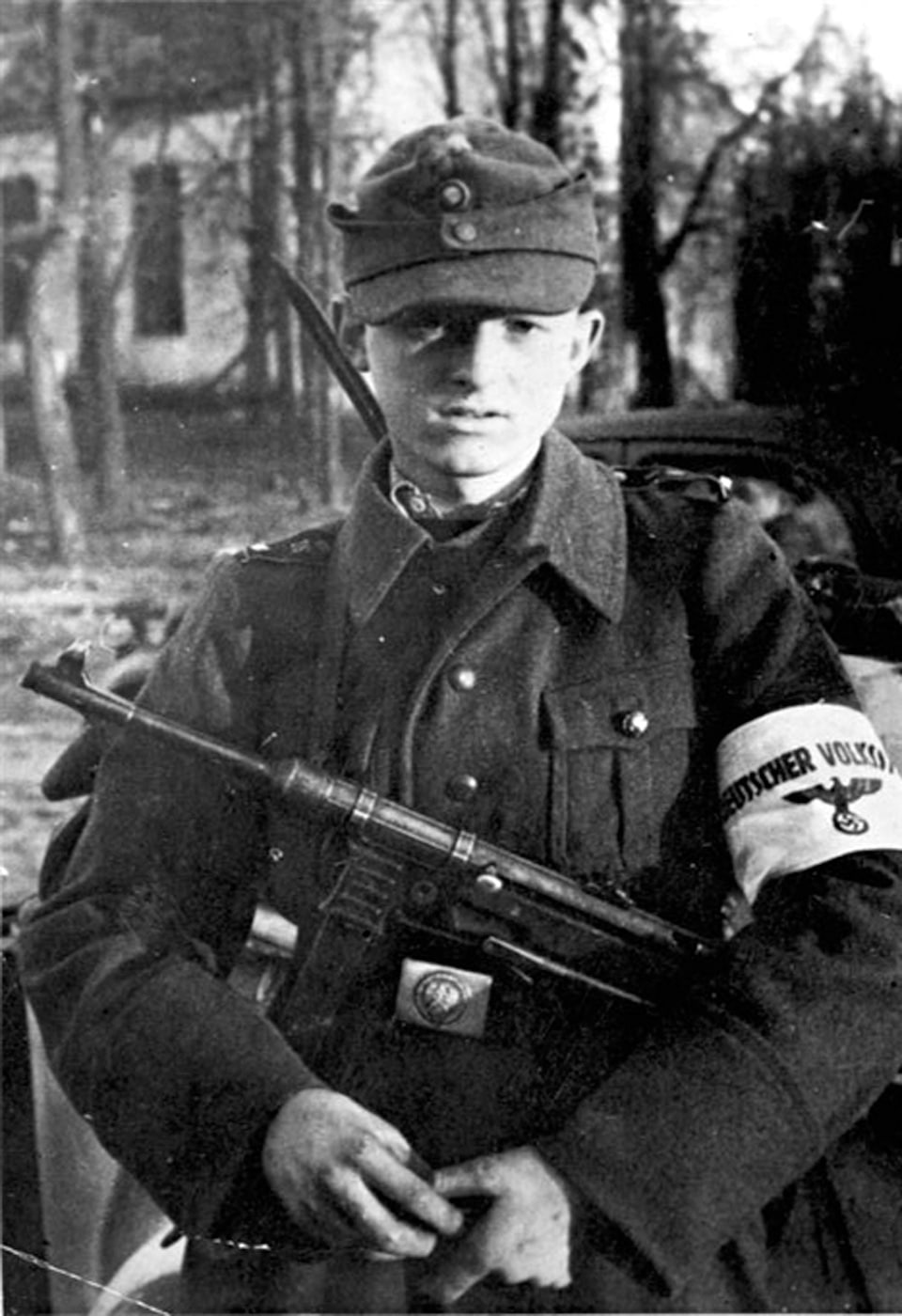
On the Eastern Front, the concept of “total war” was well understood by everyone — particularly the civilians. The Germans were filled with dread as the Red Army approached, and the people’s militia was considered a very necessary organization by the Germans in the Eastern provinces. The commander of Volkssturm Battalion Breslau Number 3 provides a good description of the fervency of the militiamen in the East:
Certainly, our armament wasn’t exactly top-notch, but the spirit of the men was good and intact. It was incredible how enthusiastically the Volkssturm men, mostly of riper years, took on the responsibilities assigned to them. It has to be said that the old men of the Volkssturm, with their inferior armament, and despite all the difficulties facing them, acquitted themselves surprisingly well in fighting against the young, well-equipped Soviet troops.
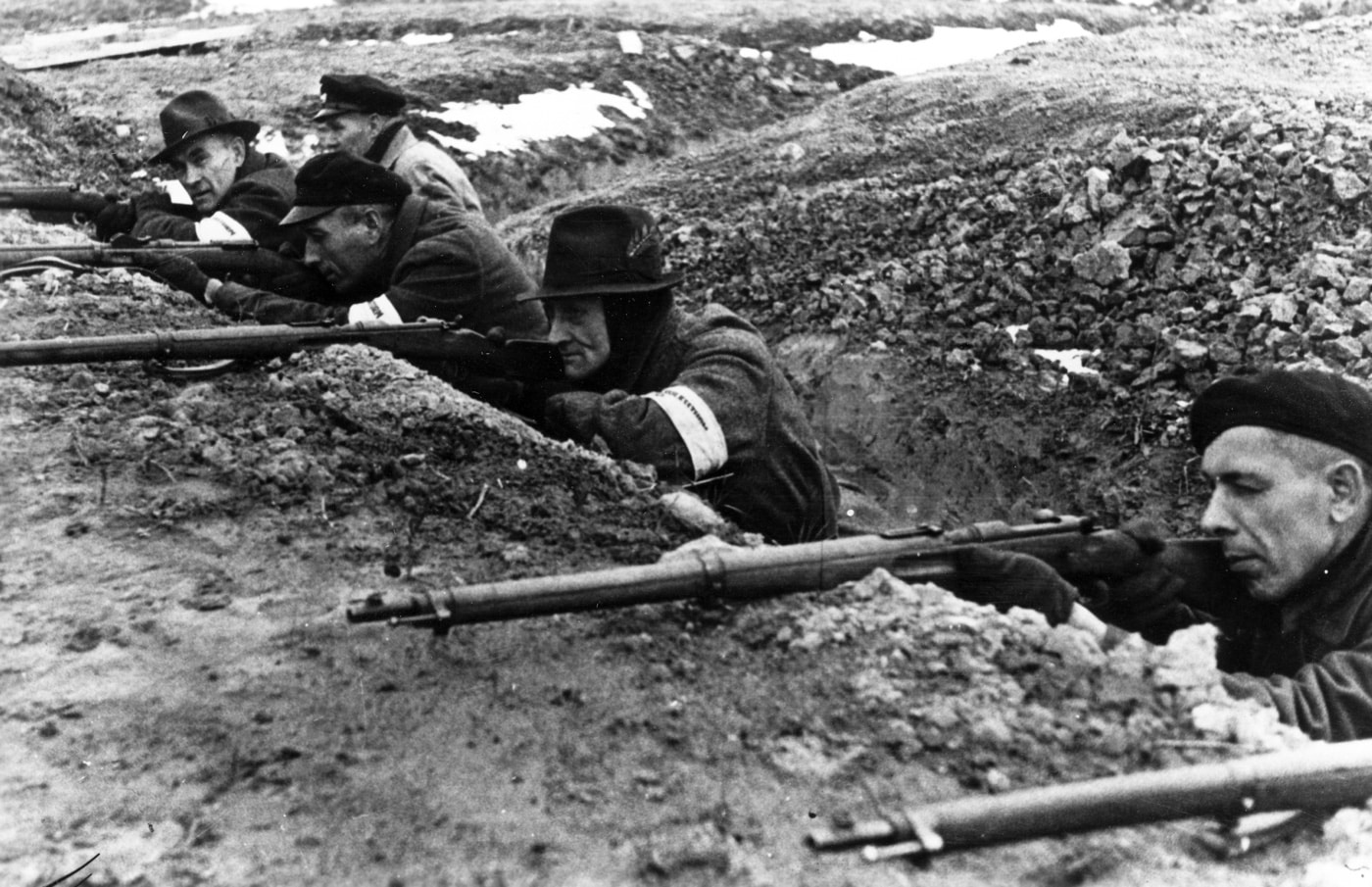
Oberst Brandstaedter, former Chief of the General Staff of the German 19th Army, provided this comparison of the Volkssturm units in East versus the West:
In the West, it never came down to any serious fighting between the Volkssturm and the enemy. The Volkssturm units for the most part ‘vanished into thin air’ when the enemy approached. In the East, things were quite different. In spite of the much-discussed difficulties, in many places the Volkssturm acquitted themselves gallantly against the attacking Soviets. This was particularly true in cities such as Oppeln, Brieg, Glogau, and Breslau. Thanks to the unfailing commitment of their Volkssturm garrisons, they were able to hold out for months, right up until the general surrender, against all raging assaults of the Soviets.
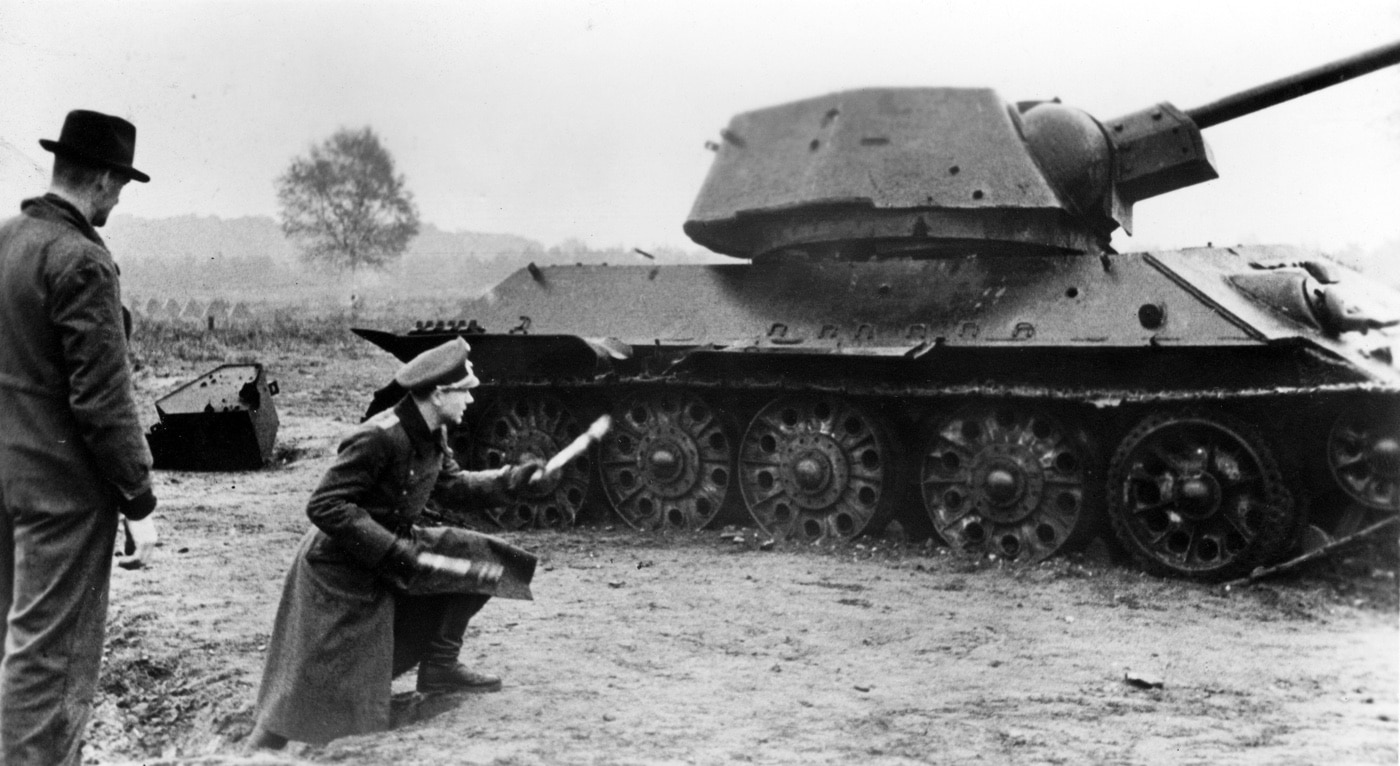
I unearthed some U.S. intelligence reports about the German militia units they faced, and some excellent detail was provided in the interview of the administrative officer of the Metz Volkssturm, captured in late 1944:
The Volkssturm in Metz
After the proclamation by Hitler on October 18, 1944, Kreisleiter Schubert of Metz ordered the registration of all German male citizens between the ages of 16 and 60 in the city of Metz.
For the battalion that was to be formed he suggested to Gauleiter Stoer at Saarbrucken that 1st Lieutenant Langkitsch be the commanding officer. The latter was working in a book firm in Metz after having been retired from active duty as an officer because of physical disability. Stoer approved the recommendation and thereafter the work of recruiting and training the battalion fell on Langkitsch’s shoulders.
The men who registered for the Volkssturm were interviewed next by the commanding officer. They had to produce statements showing the type of work in which they were engaged and how essential they were in the work they were doing. They were then given a medical examination. From the results obtained, the Battalion CO made his selections. He could select as many or as few as he saw fit.
Originally it had been planned to form a Volkssturm Battalion “Metzland” with recruits from the rural country surround Metz. However, due to the transport difficulties and the impracticality of training men who resided in widely scattered areas the plan was abandoned, and recruiting was restricted to urban Metz.
Volunteers
Men who were not German citizens were allowed to volunteer for the Volkssturm, and according to the POW’s reports, 93 Lorrainers actually volunteered. Volunteers were also accepted from German citizens under 16 and over 60 years of age.
Training
The Metz recruits had one week of training before they became operational. The instructors were the CO, the Adjutant (reporting POW), some policemen, and a few veterans from the last war. None of them were SA or SS men, but the majority were members of the Nazi Party.
The “week of training” consisted of rifle practice on two weekday afternoons for two hours and on Sunday for four hours. After the eight hours of training, the Volkssturm were put on bridge-guarding duty or were ordered to assist in the defense of Fort Wuerttemberg. While in the fort the Adjutant gave some hasty instructions in the use of the hand grenades and the Panzerfaust. No training was given in the use of the machine gun since enough gunners with experience from the last war were available to man the guns with some semblance of skill. No further training was provided.
The fact that Commanding Officer Langkitsch was a party member was “to his credit” but the POW reports that he was chosen primarily because of his military experience. Likewise, Langkitsch chose his company, platoon, and squad leaders based on military or para-military experience. The four company commanders had the following experience: Police Wachtmeister, Police Unterfuehrer, Army reserve officer, Air raid warden.
In the Volkssturm at Metz, the SA and SS did not play a role, and no political instruction was given.
Pay and rations
The members of Volkssturm Metz were not paid by the state during the training period. While they were training, they did not lose pay for being absent from their civilian work. During the training period the men ate and slept at home. When the Volkssturm became operational, they received food and pay from the German Army.
Age
The most numerous age group in the Volkssturm Metz was approximately 45 years. POW reports that the oldest member out of approximately 500 men was 58 years old, and only eight or ten boys of 16 years of age.
Notes from POW Volkssturm Adjutant of the 1st Volkssturm Battalion Metz:
All companies were armed with “98 rifles” or with Italian and French types. The 60 men from 4 Company who were ordered to defend Fort Wuerttemberg had additional armament consisting of 2 x MG42, 40 Panzerfausts, and 125 egg-type hand grenades. Ammunition was ample for all weapons, except the Italian rifles.
The 1st and 2nd Companies had some fighting value since the personnel were former policemen who could handle rifles passably. Their discipline was high. They were handicapped, however, by a lack of stamina (average age was 45) and light weapons.
The 60 men from the 4th Company who were sent to Fort Wuerttemberg, suffered from the same shortcomings while having less military training and discipline. This was due in part to the fact that their civilian occupations did not require the use of weapons.
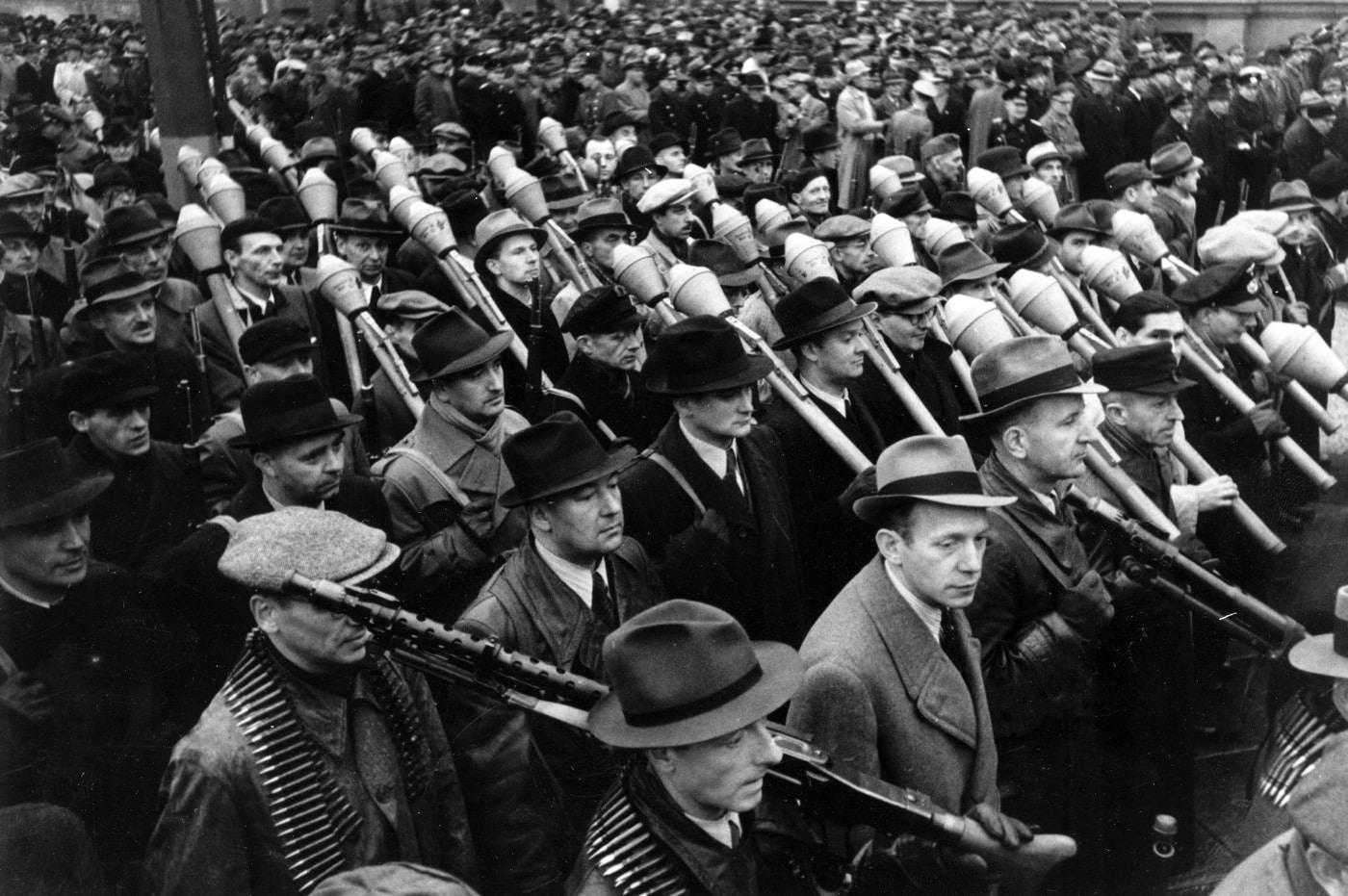
Equipping the Volkssturm
Most of the Wehrmacht leadership completely doubted the combat value of the hastily organized Volkssturm units. To make matters worse, the Volkssturm was raised by the Nazi party, and was not led by the German military. Beyond that, the Wehrmacht was barely able to equip its own units, much less waste scarce weapons and ammunition on poorly trained militiamen.
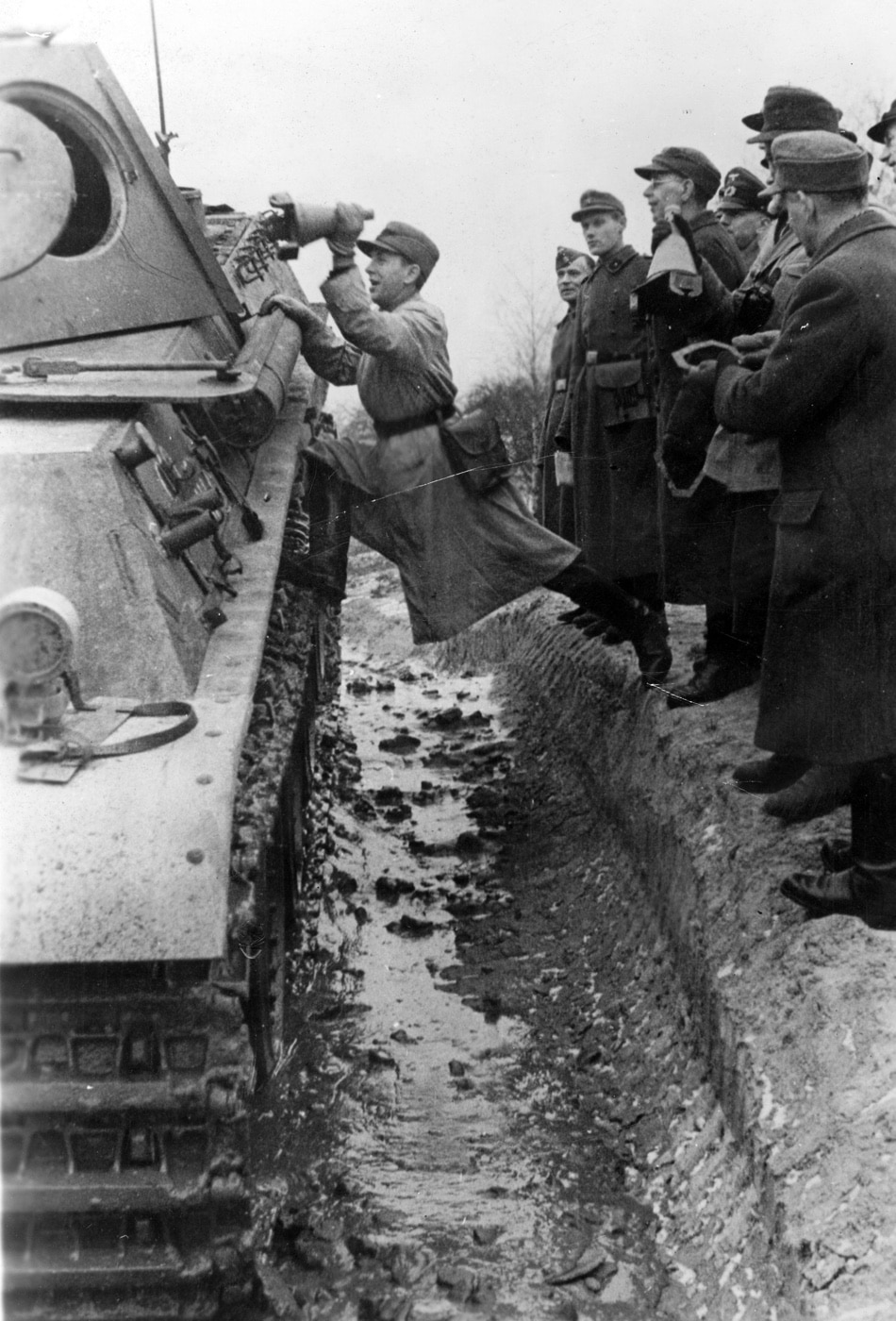
In the years immediately after the war, the U.S. military leveraged its collection of captured German officers to create several monographs about Germany’s war on the Eastern Front.
In “Military Improvisations during the Russian Campaign” an unnamed German General commented on the Volkssturm units in the East:
The Volkssturm included all men up to the highest age groups as long as they were capable of bearing arms and were not already serving with the armed forces. This might have provided a broad basis for successfully mobilizing whatever fighting strength had not yet been tapped if there had not been a complete lack of weapons, clothing, and equipment. Whereas clothing and equipment might conceivably be improvised, this does not hold true of arming hundreds of thousands or even millions of men. The Wehrmacht could spare nothing. At the same time, it became more and more obvious that the paramilitary Party formations had hoarded and hidden weapons and ammunition, but in view of the large number of Volkssturm draftees these weapons were of little help. Then, a Party official had the idea of manufacturing simplified Volkssturm rifles with barrels he could “procure” from some factories in Saxony. This plan was also of little consequence. Thus, the whole project of staging an armed levee en masse was doomed from the very outset.
Leadership and training were two of the other problems to be solved. Among the men of the Volkssturm were many veterans of World War I. Although there had been many changes in the field of tactics, these men had sufficient military background to cope with the simple missions of which the Volkssturm was capable. To provide adequate training was a more difficult matter. Men who differed widely in age, former branch of service, or of training, as well as men without any training whatsoever, were attending military drill periods in their spare time, as a rule on Sundays. Occasionally, in towns with local garrisons, one or two instructors were provided by regular army units. That was all the assistance the Wehrmacht could give because it had no men to spare. Moreover, the Volkssturm was a Party improvisation and probably deliberately kept apart from the Wehrmacht from its initial organization.
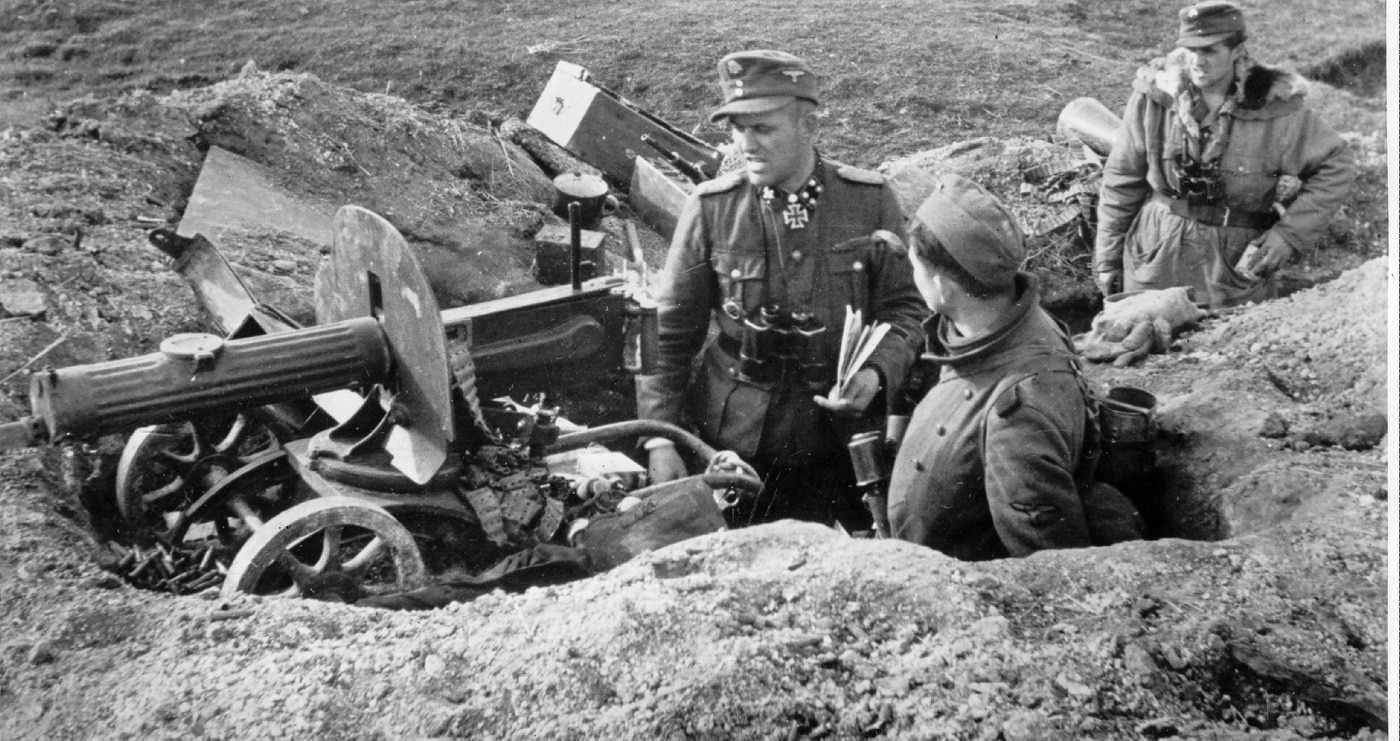
As the war drew to a close, a few Volkssturm units in the East had become effective combat units. Fear and necessity are fantastic motivators. “Military Improvisations during the Russian Campaign” acknowledges:
Months of continuous instruction raised their standard of training to such a degree that several Volkssturm battalions were able to carry out limited combat missions. A few of these so-called special employment units were equipped with enough modern weapons such as the most recent 75mm anti-tank guns, the latest model machine guns, and some older-type small-caliber anti-aircraft guns. Some of them even had adequate motor transportation. The units were composed of a small percentage of World War I veterans with the rest about equally divided between 16- and 17-year-old youngsters and elderly men from 60 to 75. Some of the battalions were under the command of former staff officers who had distinguished themselves in World War I but were now afflicted with various physical disabilities.
Conclusion
In the final accounting, a militia has little opportunity for success in modern war, regardless of their passion for defending their country. Losses among their units were often quite high; estimates range up to 600,000 casualties suffered by the Volkssturm in the last few months of the war.
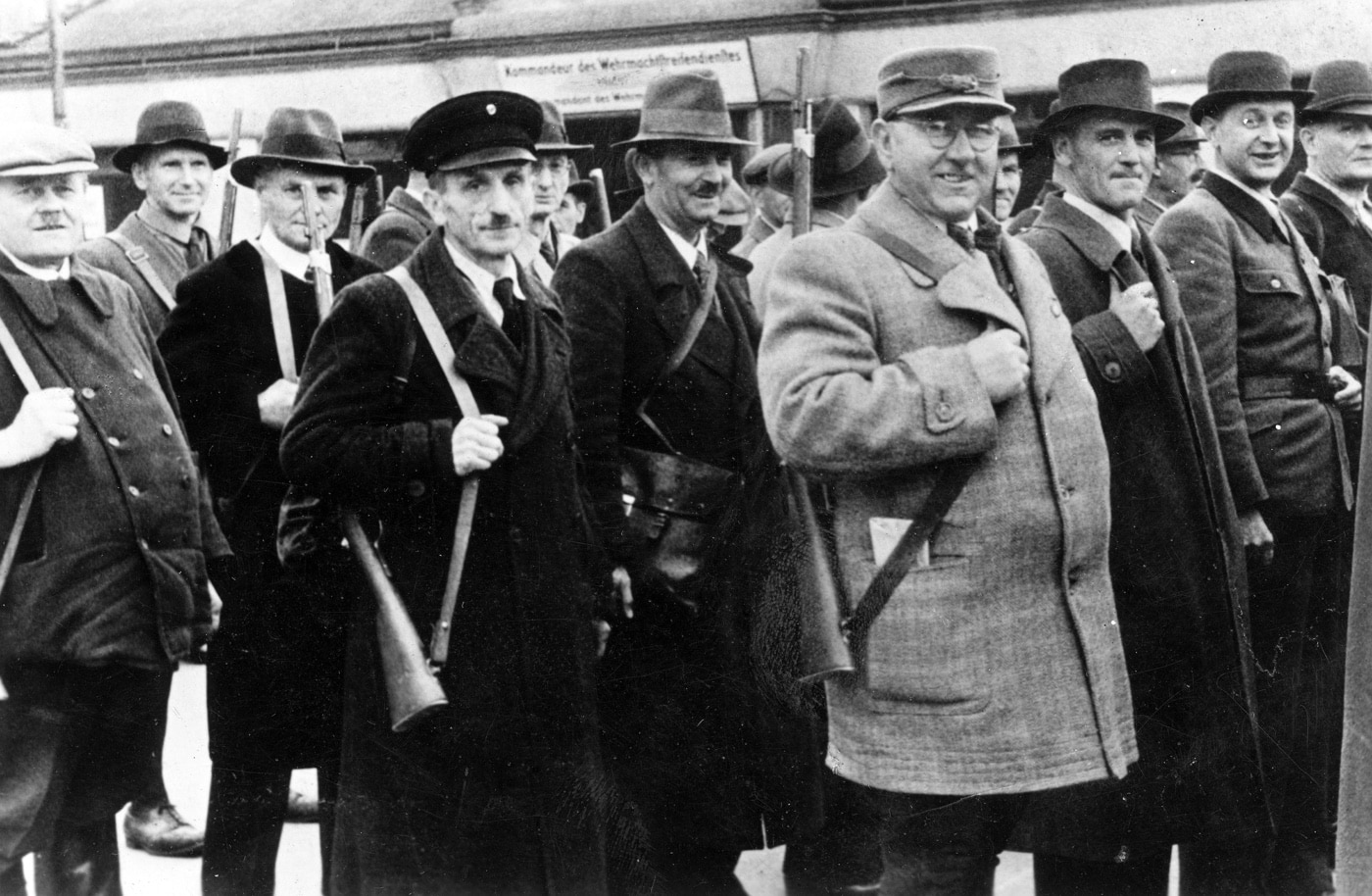
My father was a sergeant with the U.S. 13th Infantry Regiment during WWII, and he came up against the Volkssturm on a couple of occasions during the invasion of Germany in 1945. I remember his harsh assessment of fighting them: “An old Volkssturm man with a rifle can shoot you just as dead as a top-notch infantryman. With that in mind, we didn’t take it easy on them and hit them as hard as would anyone else.”
Editor’s Note: Please be sure to check out The Armory Life Forum, where you can comment about our daily articles, as well as just talk guns and gear. Click the “Go To Forum Thread” link below to jump in and discuss this article and much more!
Join the Discussion
Continue Reading
Did you enjoy this article?

 84
84






